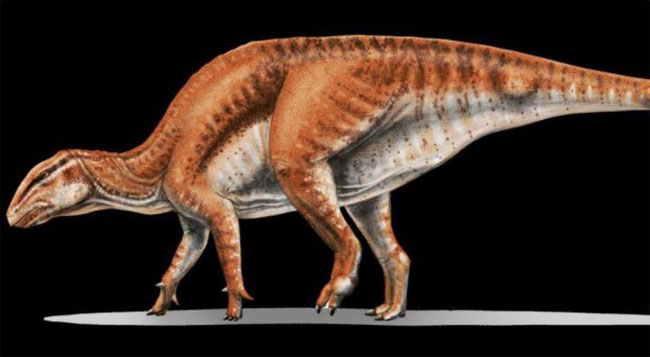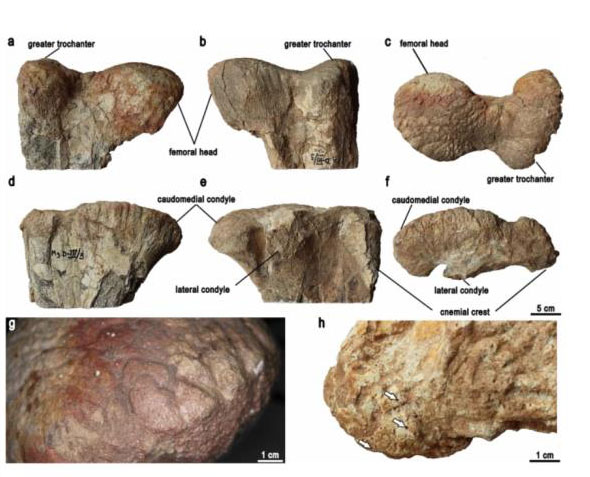A Very “Old” Dinosaur
Scientists have examined the fossilised remains of a large ornithopod dinosaur, whose fragmentary remains were discovered in 1963 and concluded that these remains represent one of the “oldest” dinosaurs known to science. The fossils assigned to a basal member of the Hadrosauroidea known as Gobihadros mongoliensis are not that geologically old, this dinosaur roamed Mongolia around 93 million years ago, the important point to note is that the fossils come from a very aged dinosaur. These fossilised bones have provided palaeontologists with a unique insight into the ageing process of non-avian dinosaurs.

Most Dinosaur Fossils Represent Young Animals
Palaeontologists classify vertebrate fossils such as dinosaur remains into three broad age categories. These categories are juvenile, subadult and adult. In the absence of a detailed assessment of bone structure examining lines of arrested growth (LAGs), that can provide a guide to the number of years an animal has lived, the age of the vertebrate is estimated by looking at the degree of ossification of the skeleton, the bone microstructure and the size of animal. Larger animals with more ossification present in their skeleton indicate older animals.
Most of the dinosaur fossil remains represent young animals such as subadults or juveniles. However, a team of scientists writing in the academic journal “Scientific Reports”, have published a paper looking at the fragmentary Gobihadros material that was discovered in 1963 and concluded that these bones represent a very aged dinosaur. How old is difficult to tell, but the presence of abnormal calcium deposits in some of its bones indicate that this Gobihadros suffered from a form of arthritis, which is found mostly in very old members of a population.
Probably Gobihadros mongoliensis
Elements representing limb bones, part of the left foot and nine tail bones (caudal vertebrae) have been preserved. The femur and tibia match fossil material assigned to Gobihadros (G. mongoliensis) which was named and described in 2019: A New Hadrosauroid Dinosaur from Mongolia.
As G. mongoliensis is the only large ornithopod known from the Baynshire Formation in the Khongil Tsav locality (Mongolia), where the fossils were found, the material has been assigned to this species. When first scientifically described in 2019, the holotype fossil material indicated a dinosaur around three metres in length, these fossils, representing a much larger animal suggest that Gobihadros grew to a maximum size of around 7.5 metres long.
The absence of open transcortical channels associated with the limb bones indicate that this dinosaur was very old when it died.

Calcium Pyrophosphate Crystals Found
Traces of abnormal calcium deposits were identified in some of the bones. Computerised tomography (CT scans) revealed that this dinosaur suffered from a form of very painful arthritis called CPPD (calcium pyrophosphate crystal deposition). These calcium crystals build up in the joints and lead to restricted movement, joint stiffness and considerable pain. This condition is found in our own species, it most often affects people in their late fifties.

Co-author of the paper Dr Tomasz Szczygielski (Polish Academy of Sciences) commented:
“Dinosaurs in the reptile family tree are close to birds, but some of their characteristics, such as metabolism, refer to mammals. That is why it is still difficult for us to interpret how these organisms aged”.
The fossilised remains of this elderly dinosaur are currently on display at the Museum of Evolution at the Palace of Culture and Science in Warsaw (Poland). The scientists hope that further research using other museum specimens may provide more information on how dinosaurs aged and this might provide an insight into why some kinds of archosaur such as the crocodiles survived the end-Cretaceous mass extinction event but the non-avian dinosaurs did not.
The scientific paper: “Dinosaur senescence: a hadrosauroid with age-related diseases brings a new perspective of “old” dinosaurs” by Justyna Słowiak, Tomasz Szczygielski, Bruce M. Rothschild & Dawid Surmik published in the journal Scientific Reports.
The Everything Dinosaur website: Dinosaur Toys and Models.

